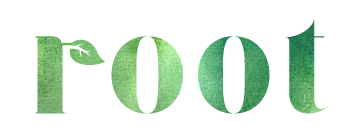Autumn (or fall depending on what you like to say) always makes me think about tradition and gratitude. Yes, I realize that the thanksgiving holiday was named in quite the literal way – not a lot of guesswork needed to breakdown what we’re supposed to be doing on that day. And then tradition comes in because each of our families, friends and tribes all celebrate in their own special way. Maybe there is turkey or maybe not depending on where your loved ones have landed on the whole “is there a way to make turkey that is NOT dry” debate.
In my family, thanksgiving traditions are less about the where you stand on the great turkey debate and more about the occasion. I am, as my mother says, “a Thanksgiving baby”! My birthday falls the day before, on or day after this gratuitous holiday. So, naturally our thanksgiving dinners have traditionally doubled as a birthday party. Each year as I stand in front of my cake, surrounded by 25 of our closest family and friends, I feel a deep sense of belonging and authentically express gratitude for this gift called life.
The power of gratitude is becoming a popular topic in all circles of thought from business to leadership development to health and wellness. Heck, when Lianne Rimes does a one-minute video for Fortune Inc. on how her gratitude journal helps her create a more positive mental state (I did not make that up), you know that a topic has made it big time.
But you don’t have to take Lianne Rimes’ word for it. Gratitude is no doubt an important aspect of human nature and has been and still is valued by religions and moral philosophies. Research has demonstrated that when we take time to be grateful, particular neural circuits (nerve cells that carry information to the central nervous system) are activated. Similar to the function of many antidepressants, the practice of gratitude has been proven to increase the production of dopamine and serotonin (our naturally occurring feel good chemicals). In fact, when I work with my clients, (no matter the condition), there typically is some sadness, frustration, and/ or stress that surround the challenges being faced. As part of the yoga therapy plan, I encourage them to keep a gratitude journal and the positive reports continue to demonstrate its deep impact! Simply said, the more we practice being grateful, the more content we feel, which improves our psychological well-being and overall health.
But, what about tradition? Why do we maintain them or even do them in the first place?
In my family, we have thanksgiving traditions that date back generations (literally) and as my family grows, new traditions are being embraced. Yet, through all the changes, the one thing that remains constant is the feeling of warmth and connection that traditions bring. I love that my birthday party has been built into to our thanksgiving tradition because I know that, like with all traditions, this was done with purpose, thought, and intentionality. The heightened attention around this celebration has always made it feel just a bit more magical and lent a certain spirit around the table.
I find that one of the most special and comforting aspects of yoga is that it too is steeped in tradition. The word yoga, comes from the Sanskrit root “yuj”, meaning to join, unify or become one with. All yoga consists of teachings that are passed from teacher to student. This tradition dates back more than 5000 years! Traditions can have a positive impact on our health and the health of our future generations.
Let’s explore a few of the other benefits of tradition through our yoga lens.
Identity: Traditions tell a story and allow us to understand the roots in which we’ve evolved. In yoga, the importance of the teacher/student relationship cannot and should not be minimized. The direct transmission of knowledge from teacher to student allows this ancient practice to thrive with consistency and without misinterpretation. It is this strong tradition that allows the core of the practice to be preserved, while simultaneously progressing.
Practicing traditions in family can offer a similar magic. Emory University psychologist Marshall Duke discovered that children who had an intimate knowledge of their family’s history were more resilient, better able to manage life stressors, and had more self-confidence than those who didn’t. It was concluded, that understanding your past and knowing that you belong to something bigger than yourself increases your ability to thrive.
Bonds: T.K.V. Desikachar (a master teacher who transformed the way yoga was practiced and turned it into both a wellness concept and a therapy) strongly expressed the powerful role that relationships play in the healing process. Coincidentally, there is compelling evidence that strong relationships contribute to a long, healthy, and happy life. Researchers have consistently found that families that engage in regular traditions report stronger connection and unity than those who don’t have these rituals. These interactions invite in more trust, intimacy, and help establish a bond that allows us to feel we are part of something unique and special. Further studies have found that those who feel they have friends and family to count on are better able to manage stress and are more satisfied with their personal health. Values: One of the main purposes of traditions is to instill and reinforce values. In Patanjali’s 8 limbs of yoga (Get to Know the 8 Limbs of Yoga), a guide to living a meaning and purposeful life, a list of values are offered as the first 2 steps on the path to vital health, peace and wholeness. Traditions allow for the development of strong family values, which have been shown to help create a stable foundation for a family to thrive through crisis and challenge. Family values also influence the way children perceive themselves and the world around them. When we communicate, and live those values, our children learn to express themselves, problem solve, grow from mistakes, and develop other skills that lead to fulfilling lives.
Values: One of the main purposes of traditions is to instill and reinforce values. In Patanjali’s 8 limbs of yoga (Get to Know the 8 Limbs of Yoga), a guide to living a meaning and purposeful life, a list of values are offered as the first 2 steps on the path to vital health, peace and wholeness. Traditions allow for the development of strong family values, which have been shown to help create a stable foundation for a family to thrive through crisis and challenge. Family values also influence the way children perceive themselves and the world around them. When we communicate, and live those values, our children learn to express themselves, problem solve, grow from mistakes, and develop other skills that lead to fulfilling lives.
With personal face-to-face connection and intimacy becoming less and less a part of how we move through the world, it is that much more important the we utilize every opportunity to maintain and practice the traditions that we hold dear. In my growing family, it’s been fun keeping the core of our childhood traditions alive and allowing them to evolve and change with the times. If you’re reflecting on this and having a hard time identifying what your traditions look like, or simply no longer relate with the ones from your childhood, start your own! Perhaps you start by reaching out to family or close friends to express your gratitude or calling upon your loved ones to help you establish impactful rituals and long lasting memories.
Happy Holidays!





Recent Comments